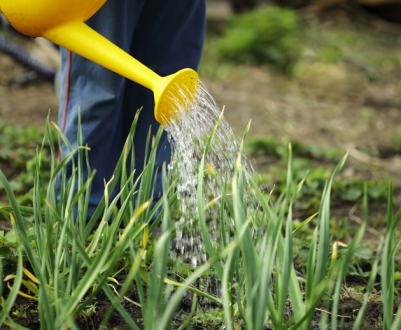 So, if you ignore the information on growing this healthy vegetable, then you will certainly come across the fact that garlic turns yellow: how to water and feed it in order to save the harvest. Of course, there are some very effective tips accumulated by gardeners, but it should be noted right away that it is not easy to solve a problem that has already arisen.
So, if you ignore the information on growing this healthy vegetable, then you will certainly come across the fact that garlic turns yellow: how to water and feed it in order to save the harvest. Of course, there are some very effective tips accumulated by gardeners, but it should be noted right away that it is not easy to solve a problem that has already arisen.
Basic agricultural requirements
It is much easier to prevent the onset of symptoms of unfavorable plant development, for one reason or another, by initially planting and caring for garlic according to all the simple rules.
It should immediately be noted that garlic is very picky about the condition of the soil, if you want to get a well-formed bulb with large cloves, then this fact must be taken into account. The yellowed leaves will become an insurmountable obstacle to obtaining a high-quality and large crop.
It is unlikely that you will be able to determine if the soil on your site is fertile enough, and also its mineral composition, by eye without laboratory tests. However, if timely to apply basic organic fertilizers for preventive purposes, you can be sure that everything is normal with the fertility of the soil.
The most effective fertilizer you can recommend is special activator for plant growth, Click here to read more about it. Using it, the rest of the procedures can not even be carried out.
It is enough if you:
- before planting, bring into the wells wood ash, crushed into powder;
- loosen the row-spacings and make rotted peat, mix with the ground, cover with mulch, then you definitely won’t see how the garlic turns yellow, and folk remedies will help to water and feed it;
- spend the first main dressing in the spring, if it is a winter planting, then as soon as the snow melts, and if it is spring, then a week after planting. Feeding is best done on your own from organic fertilizers, rather than using mineral, so you get a crop much more healthy. Preparing dressing is quite simple, you should dilute the mullein with water in a proportion of 1:10 or chicken droppings 1:12, in addition, you can use wood ash dissolved in water at the rate of 200 g per bucket of water;
- spend the second main dressing in June or early July, having prepared the top dressing as in the first case.
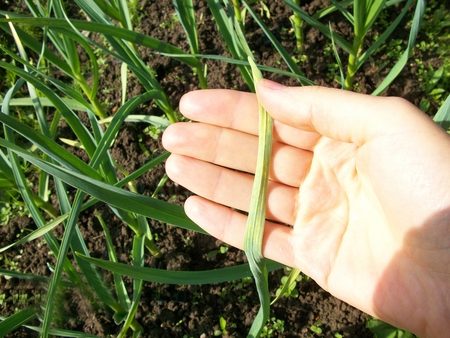
Recommended:When to dig out winter and spring garlic.
But not only soil fertility should be carefully considered when deciding to grow garlic in your area. If we summarize the accumulated experience of gardeners and use the advice of professionals, it can be noted that garlic loves:
- fertile soil;
- a sufficient amount of light;
- moderate watering;
- neutral soil acidity;
- proper rotation of the beds;
meaning that on the same bed garlic can be grown no earlier than 4 years later. Several factors play a role here, if the powerful selection of organic substances can be supplemented with fertilizers, then toxic secretions of the root system (as well as in other crops) will begin to interfere with proper vegetation, which will certainly affect the quantity and quality of the crop. There are several more reasons, if desired, this question can be studied in more detail by asking the question "garlic turns yellow than water and feed" on the forum.
- sandy loamy and loamy soils.
Planting garlic
As already mentioned, it is much easier to prevent the appearance of yellowness of garlic leaves than to worry about the crop later and fight the problem that has already arisen.And all - you just need to carefully study all the requirements for each agricultural activity and fulfill them exactly. So, for example, a very important point is not only itself planting garlic (however, like any other culture), but also the preparation of planting material.
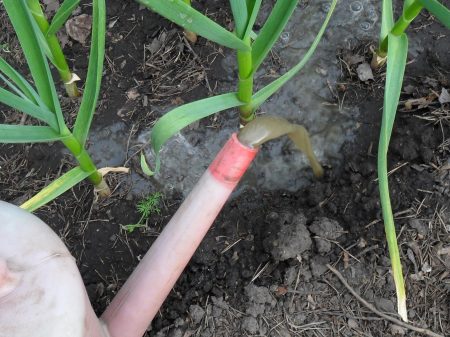
Propagation of this culture is carried out only in a vegetative way; garlic cloves are the planting material. As a brief information, it should be noted that garlic is planted in the winter and spring method, depending on your choice, the general rules for planting and care should also be adjusted.
Preparation of planting material includes:
- visual selection of garlic cloves;
For planting, culling should be carried out, removing empty and small cloves when the garlic bulb is broken, only the outer cloves are used for planting. You should also pay attention to the presence of roots in each clove, they should initially be in the bulb, garlic bulbs with cut roots are not suitable for planting. It is necessary to check the absence of fungi and other diseases on the cloves of garlic, which are manifested in the presence of various mold spots. Attention should be paid to the integrity of the husk, the “clothes” of each clove should not be damaged, which otherwise will lead to disease or rotting of planting material.
- disinfection;
Even if you are fully confident in the high quality of the planting material you have chosen, you should still process it from various bacteria. Such a simple procedure will allow to avoid further regrets about the fact that the garlic turns yellow, as well as the hassle of watering and feeding (video). There are several ways to disinfect, for example, you can hold the cloves of garlic in a solution of potassium permanganate for 15 minutes, then they should be dried. You can take the advice of experienced gardeners, prepared planting material in a decoction of wood ash for two hours, followed by drying. In addition, of course, you can take advantage of numerous preparations specially designed for the disinfection of planting stock.
Recommended:Spring garlic, planting and care.
After you have prepared the planting material, you can begin to prepare the soil, for which the garlic bed is carefully dug up and the weeds are removed. Before making holes, it should be borne in mind that the correct planting pattern of garlic can also affect the absence of problems of yellowing of leaves. As a rule, a 20 - 25 x 8 - 10 cm pattern is used for spring planting of garlic, and for winter, the distance between the cloves in the hole itself slightly increases with the same distance between rows. Thus, the resulting scheme for winter planting of garlic corresponds to 20 - 25 x 12 - 15 cm.
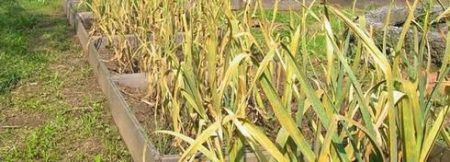
After the holes have been prepared, a small amount of halls and sand should be poured into neither, and sand is poured both from below and from above directly onto the garlic cloves laid in the holes, and only then can the holes be covered with soil. This simple agricultural technique is directly related to the considered problem of yellowing of garlic leaves. The fact is that the planting material of garlic does not tolerate the sticking of wet soil, because of which the cloves can be affected by various diseases characteristic of this crop under adverse conditions.
The depth of embedment of planting material is also an important factor affecting both the development of the bulb itself, and, consequently, the yield, and the absence of reasons due to which the garlic turns yellow (how to water and feed using folk remedies, we will describe below). The most optimal placement depth is the doubled size of the garlic cloves intended for planting, or an approximate reference to the distance from the top of the cloves to the surface of the cloves, which should correspond to 4-5 cm.
Garlic Planting
As with the cultivation of any vegetable crop, care comes down to the timely application of fertilizers, proper watering, taking into account the characteristics of each crop, weeding and loosening.
Concerning dressing for garlic, then we talked about this above, here we will pay special attention to such a unique agricultural technique as mulching. Mulching is a shelter for planting with good air exchange material, it can be fine straw, dry grass, any dust, etc.
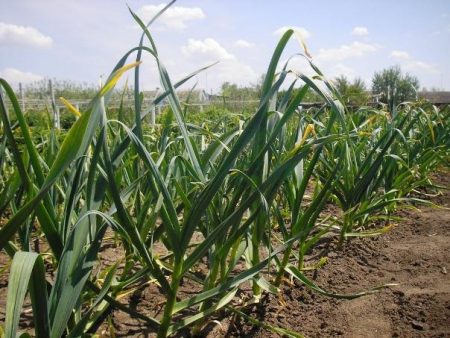
What gives mulching specifically for growing garlic, firstly, it allows to optimize watering, as we have said, watering should be sufficient on the one hand, and not excessive on the other. If you distribute by the timing of the growing season, then at the very beginning, when the plant is gaining strength and green mass, watering should be more plentiful, but still not excessive. This period lasts until June (during spring planting), and then watering is significantly reduced, at most once a week. Mulching will help to ensure that the soil does not dry out, and in addition, protects the soil from leaching of mineral substances from frequent watering.
If nevertheless the yellowness of the leaves appeared
As a rule, garlic always lacks nitrogen and potassium in the soil, so the application of these fertilizers will not be out of place. If yellowness appeared in the first half of the growing season, then nitrogen fertilizers should be introduced, and if in the second - potash.
Between the rows of garlic, a shallow groove should be made, fertilized, covered with soil and watered. It is also advisable to mulch the furrow with fertilizers after this procedure so that they do not dry out and lose activity. Another option would be to water the garlic itself, diluted in water, with fertilizers, but this is only if the soil is not overwhelmed by adverse weather conditions.
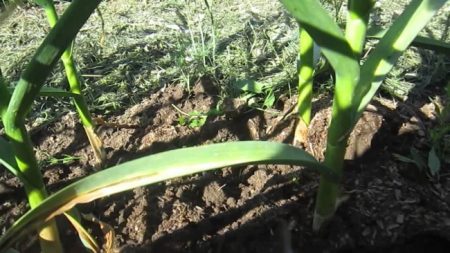
It’s possible that the planting of garlic has come under freezing, garlic turns yellow (than to water and feed), take measures immediately. When establishing precisely this reason, the landing should be treated with any stimulant sold in specialized agricultural stores.
Another reason for the yellowing of the tips of the leaves of garlic is the defeat of the planting by one of the fungal diseases, as can be seen by extracting one of the plants, visually determining the presence of black roots, or other signs. In this case, it is urgent to process the planting of garlic with any drug for specific fungal diseases (for example, Epin, Zircon).

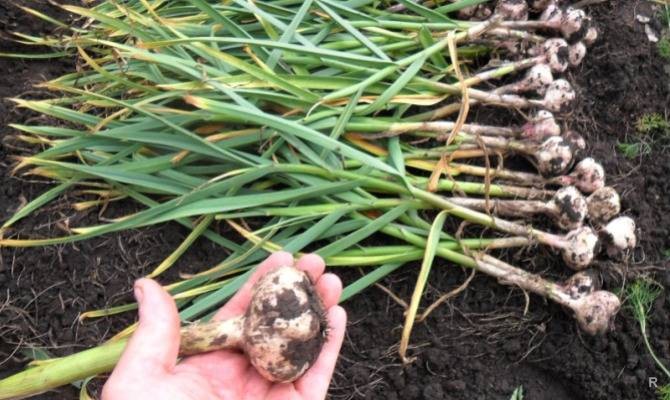
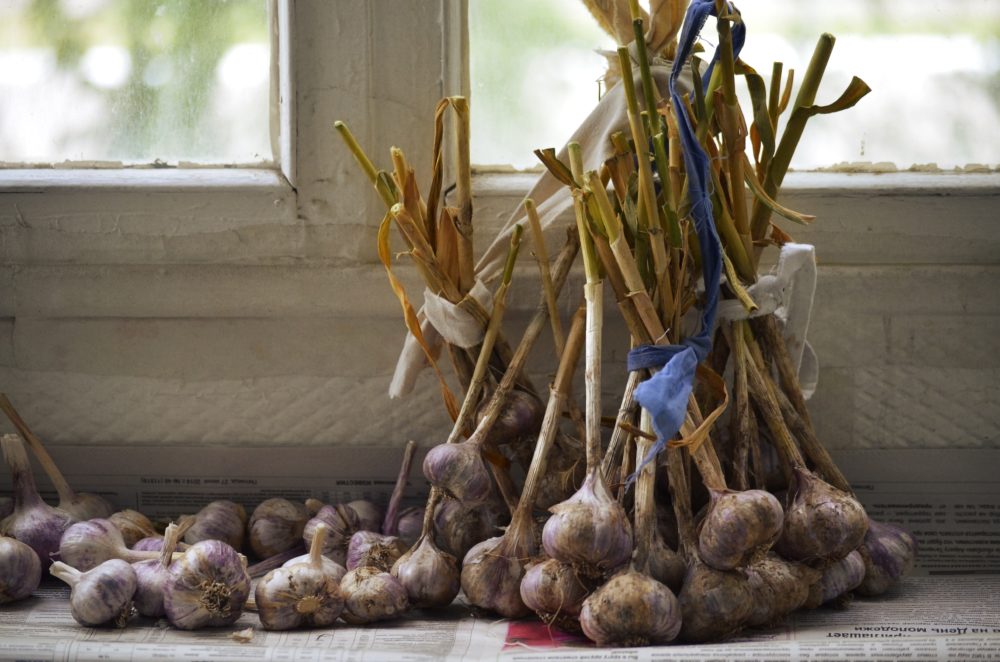
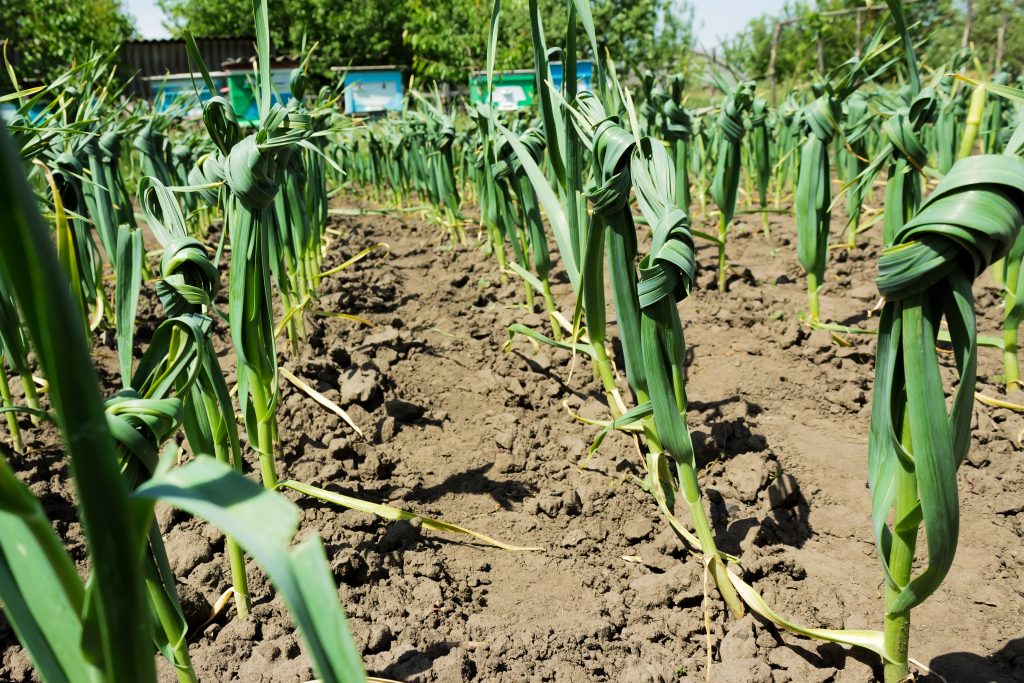
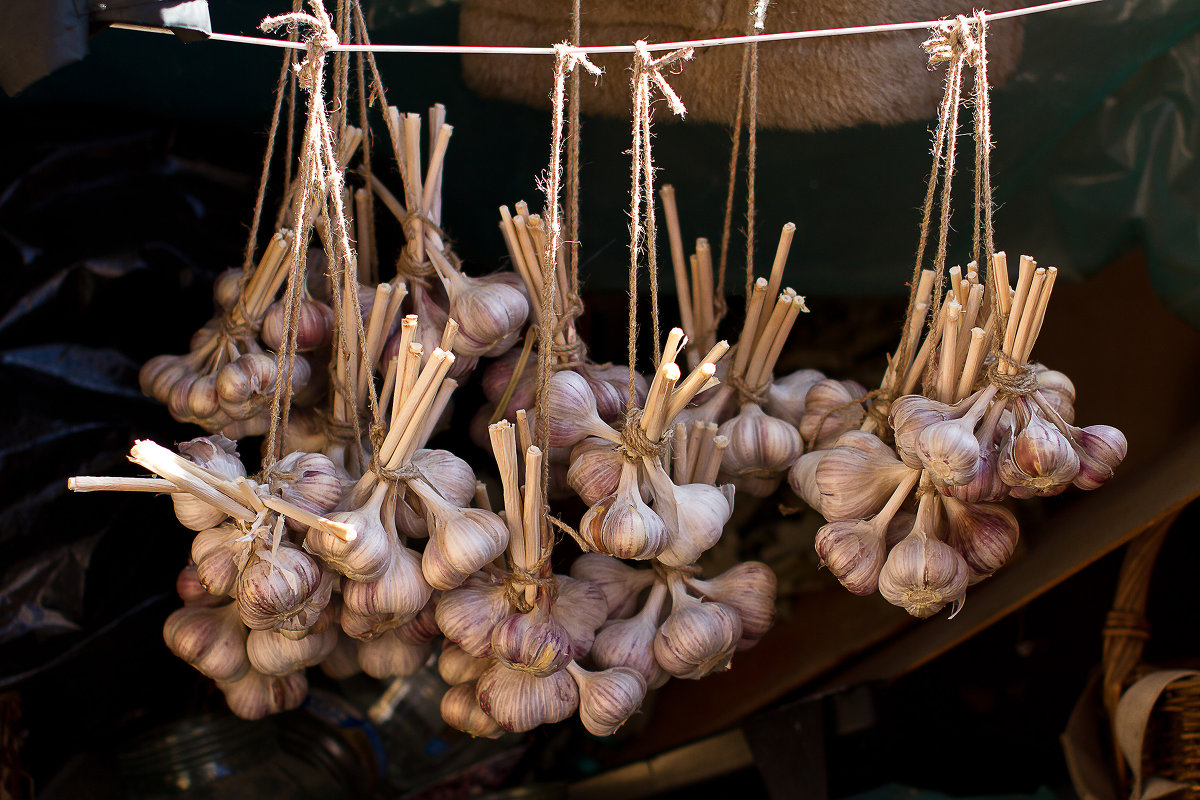 Methods for storing garlic in the winter at home
Methods for storing garlic in the winter at home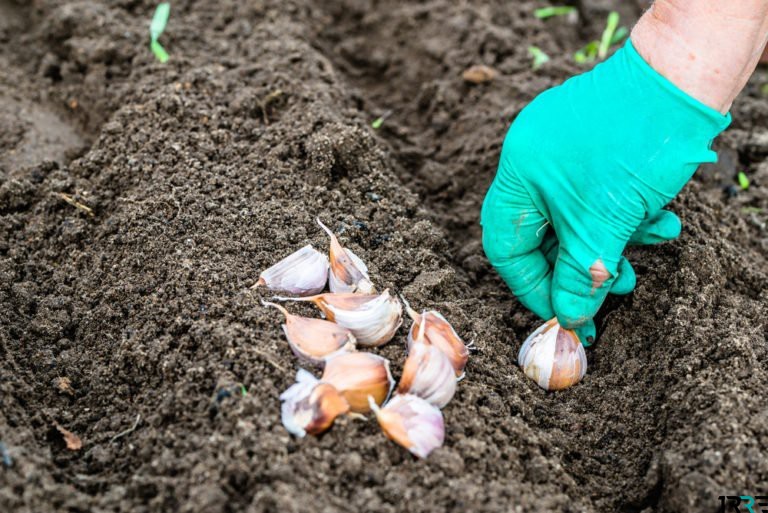 Processing garlic before planting before winter: soaking garlic and tillage
Processing garlic before planting before winter: soaking garlic and tillage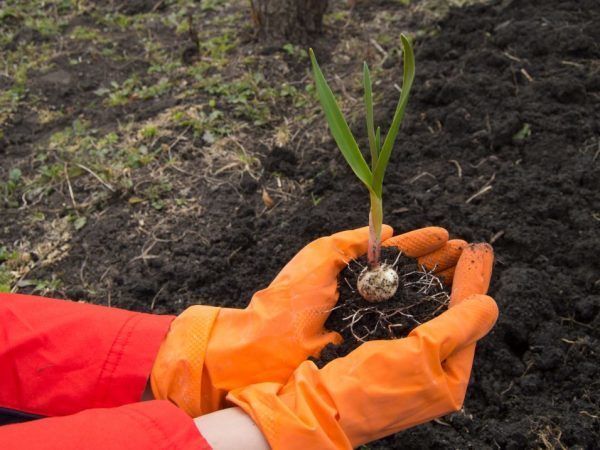 Fertilizers when planting garlic in the fall: how to fertilize the soil
Fertilizers when planting garlic in the fall: how to fertilize the soil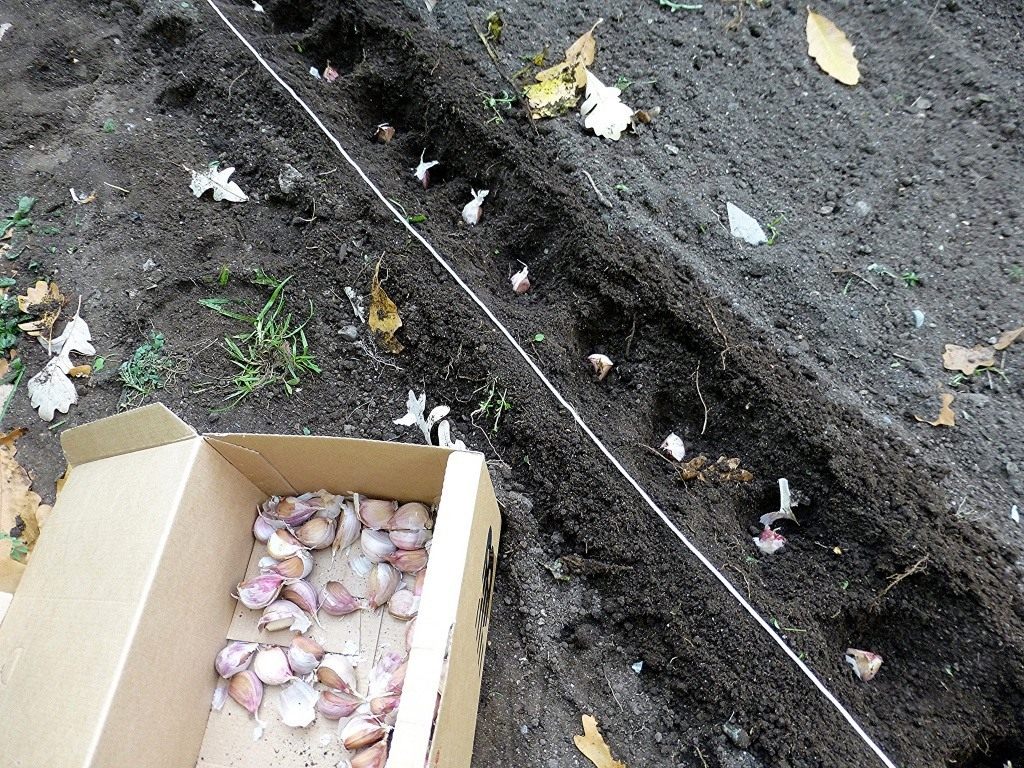 Features planting garlic in the winter in the fall
Features planting garlic in the winter in the fall
Helena
I'm afraid of course “jinxing”, but I have no problems with garlic.
And I just do it. After planting, I cover it with old manure or simply mowed grass and no more care except watering.
Lyuba
why does the chapel rot before it is tied up? One plant in November. Another in January, the third in early March and in May everything is already rotting? for the third year in a row. What is the reason?